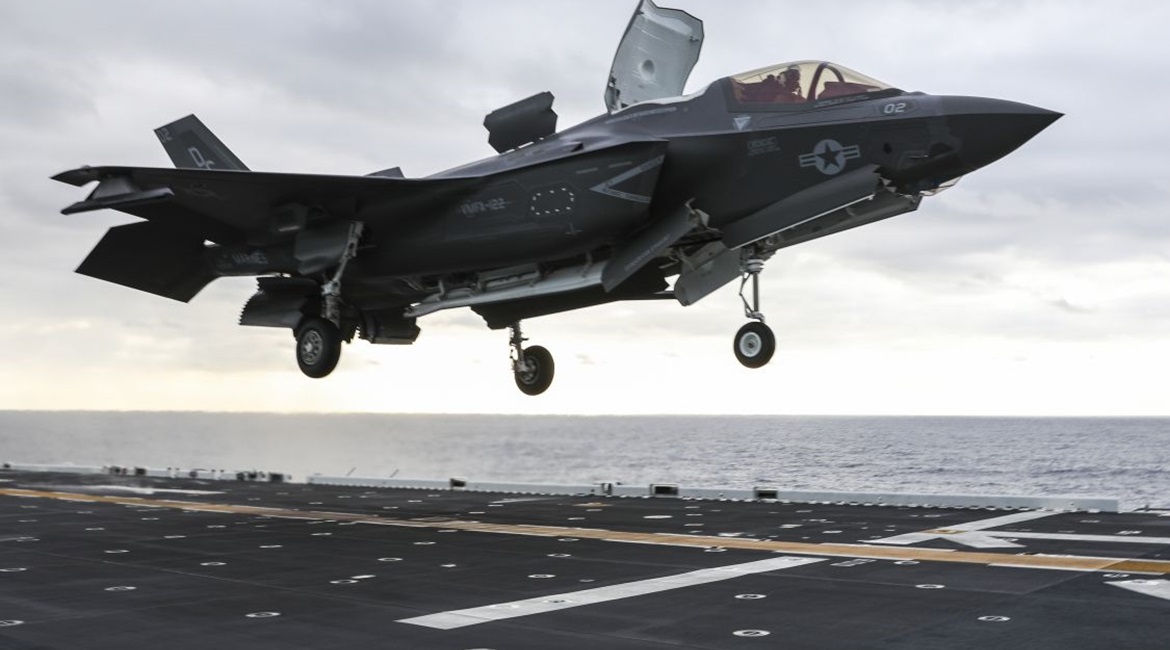
The Pentagon has closed out all but six open system development and demonstration (SDD) capability requirements for the Lockheed Martin F-35 Lightning II Joint Strike Fighter (JSF) but it still has bulkhead requirements to resolve before finally closing this contract portion.
F-35 Joint Program Office (JPO) spokesman Lieutenant Commander Keith Goodsell said on 13 March that these six open requirements fall within the airframe durability and endurance area for the three different aircraft variants. A former F-35 programme official told Jane’s on 20 March that this means the aircraft’s bulkheads are cracking too soon.

An F-35B assigned to Marine Fighter Attack Squadron (VMFA) 122 prepares to land on the flight deck of the amphibious assault ship USS Makin Island (LHD 8) on 10 February 2020. The Pentagon and Lockheed Martin have narrowed down their remaining open SDD requirements, but issues with bulkhead cracking, especially on the F-35B, remain. (US Navy)
The former official believes that the bulkhead cracking issue is mainly in the US Marine Corps’ (USMC’s) F-35B short take-off and vertical landing (STOVL) model because the Pentagon and Lockheed Martin have had to change the design of the bulkhead and create extended requirements, meaning that the new bulkhead design has to last as long as the original contract specified. The bulkhead is an internal wall spanning the fuselage that, in fighter aircraft, is there to help manage the stresses found in take-off, landing, and flight.
The new bulkhead design will not finish testing for another year or two, which is why the JPO is not closing them out, the former official said. These outstanding SDD capability requirements are awaiting formal closure once testing, analysis, and verification are completed in August, Lt Cmdr Goodsell said.
Looking to read the full article?
Gain unlimited access to Janes news and more...


